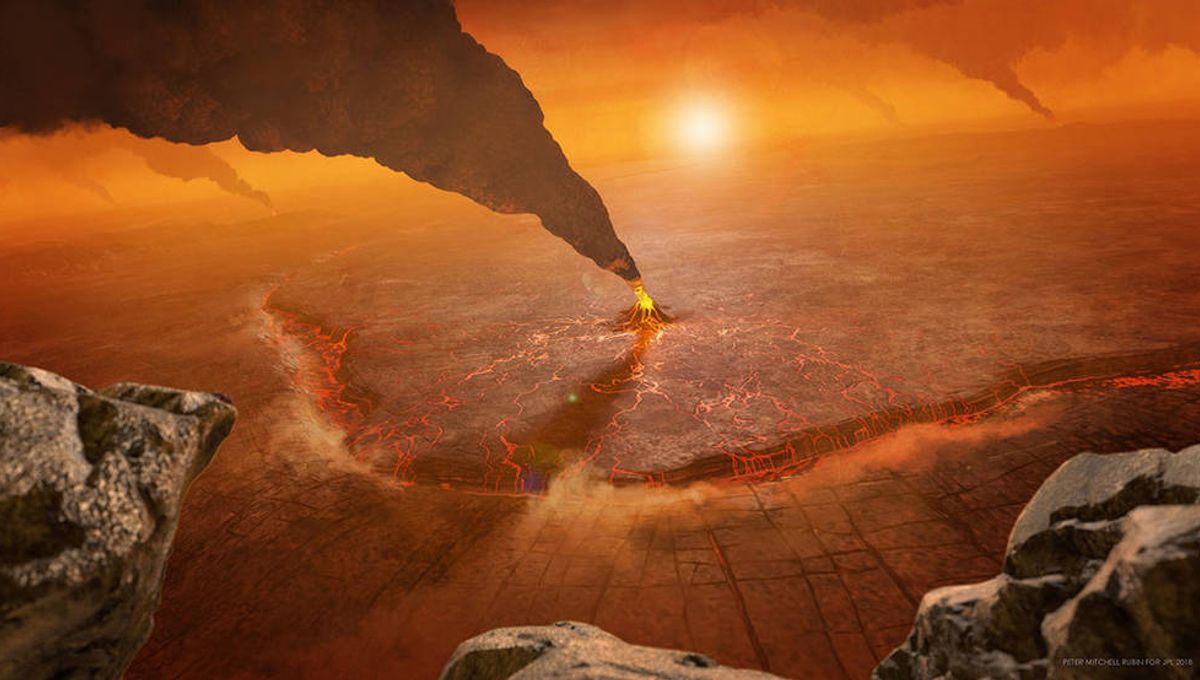
Venus is only a bit smaller than Earth, but the similarities stop there. Earth’s “evil twin” is a hellish world of crushing pressure, lead-melting heat, and acid rain. Now, a long-standing mystery about how the interior of Venus loses heat may have been solved. Astronomers think a feature on its thin and squishy crust helps.
Earth has tectonic plates, which Venus does not. Heat travels from Earth’s hot core to the mantle and eventually the lithosphere, its outer shell, cooling as it goes. This convection is what drives tectonic processes on the surface.
A new study looking at 65 unstudied coronae, geological features on Venus’s surface, suggests that the planet’s lithosphere is much thinner where they occur than elsewhere on the Venusian surface. At just 11 kilometers (7 miles) thick, the heat flow from there is much higher than the heat flow of the average location on Earth.
“For so long we’ve been locked into this idea that Venus’ lithosphere is stagnant and thick, but our view is now evolving,” lead author Suzanne Smrekar, senior research scientist at NASA’s Jet Propulsion Laboratory, said in a statement.
“While Venus doesn’t have Earth-style tectonics, these regions of thin lithosphere appear to be allowing significant amounts of heat to escape, similar to areas where new tectonic plates form on Earth’s seafloor.”
Over the last several years, evidence has been mounting that Venus is a lot more geologically active than previously considered. The coronae have certainly been an important focus on this but there are other indications too. And while the geological activity of Venus is unlike anything on Earth today, it might have been similar to Earth of the past, before the tectonic plates were established.
“What’s interesting is that Venus provides a window into the past to help us better understand how Earth may have looked over 2.5 billion years ago. It’s in a state that is predicted to occur before a planet forms tectonic plates,” said Smrekar.
The research used historical data collected by the Magellan mission which orbited Venus from 1989 to 1994. It mapped the planet using radar which could penetrate the dense clouds that shield the Venusian surface from view. NASA’s forthcoming VERITAS mission, which Smrekar is the principal investigator of, will pick up from where Magellan left off.
“VERITAS will be an orbiting geologist, able to pinpoint where these active areas are, and better resolve local variations in lithospheric thickness. We’ll even be able to catch the lithosphere in the act of deforming,” explained Smrekar. “We’ll determine if volcanism really is making the lithosphere ‘squishy’ enough to lose as much heat as Earth, or if Venus has more mysteries in store.”
The study was published in Nature Geoscience.
Source Link: Venus’s Thin And “Squishy” Crust May Be Answer To Heat-Loss Mystery